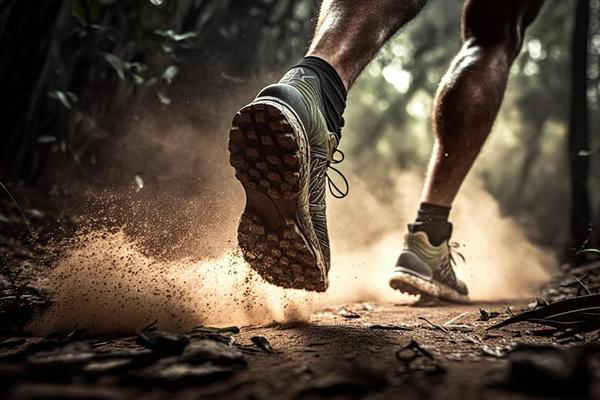A Guide to Buying Running Shoes
Find your perfect pair with our ultimate guide to running shoes.
Whether you’re new to running regularly, preparing to run a virtual marathon, or you’re just ready to take your performance to the next level, wearing a specialist running shoe rather than your casual trainers is crucial. When you run, your heels hit the ground with a force of more than three times your body weight, so a specialist, shock-absorbing running shoe is a worthy investment.
The durability of the materials used and the complicated design means they can be expensive. However, when buying running shoes, it isn’t necessary to splash the cash on the most expensive pair, you instead should find the running shoe that suits your running style, and best fits your foot.

GET THE RIGHT FIT FOR YOU
If your running shoes are not the right fit, then you may end up with painful blisters and, in some cases, black toenails!
Running shoes usually fall into two categories, neutral running shoes and support running shoes.
The midsole on a neutral shoe consists of one density EVA foam, whereas the midsoles on a support shoe are made from a harder foam on the inside to help avoid your foot rolling inwards as you run, this is known as overpronation.
There are also other types of support running shoes, with some boasting full motion control features for heavy runners or severe overpronation. If you’re an off-road runner you may consider specifically designed Trail running shoes, for fast training or racing you may need a more lightweight running shoe or racers.
HOW TO CHOOSE THE BEST RUNNING SHOE
Lace Them Up!
When trying on a running shoe, you should always tie the laces to lock your heel in place. When moving around, your heel should stay firmly in place and lift up from the footbed.
Not Too Tight!
However, you should avoid lacing up your running shoes too tight as you risk damaging the bones in the top of your foot. Always lace from the bottom holes and work your way up to evenly distribute the pressure.
Allow Extra Space!
Your toes should not touch the end of your running shoe! When trying them on, it’s always best to leave half a thumb space at the front of your shoe to allow for swelling when running.
Running shoe lengths and widths can vary depending on the brand. So, you may need to buy a pair that is half a size larger than your regular trainers. The best thing to do is try as many as possible to compare fits before buying the right pair for you!
Consider the Weight, Drop & Cushioning
Usually, the lighter the running shoe the less cushioning which can make the shoe feel ‘faster’. However, for long-distance runners heavier shoes with extra cushioning may be more suitable.
The drop is the difference between the shoe’s heel and forefoot measurements. A higher drop results in more heel striking. Most running shoes have a drop between 8 and 12 mm.
Cushioning provides impact absorption, consider the cushioning measurements in the heel and forefoot when shopping for a new pair of running shoes.
